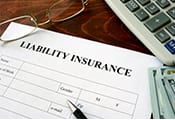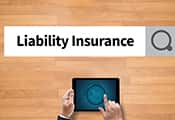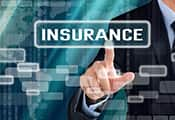Automotive Liability
A company dealing with automobiles must purchase a general liability policy in order to avoid third-party liability. Further, every company must buy a public liability policy if any operation of a business is accomplished via automobiles. However, it is essential to understand which automotive liabilities are covered and not covered under CGL.
It can be understood (which liabilities are covered and not covered under CGL) by interpreting the concept of vicarious liability defined under the law of tort. According to vicarious liability, an employer shall be liable for every civil or criminal wrong committed by an employer in the course of his employment.
The course of employment is crucial to interpret in order to comprehend the liability of an employer. For example, if the job of an employee starts at 9:00 and ends at 18:00, then every act committed by him during this period shall explicitly or impliedly affect the employer. The employer shall be liable for the wrongful act of the employee.
Liability Coverage
CGL does not offer coverage for every wrongful act committed by the employer or employee. Hence, it is important to comprehend its coverage and non-coverage.
Let us understand the liability is covered and not covered under CGL.
-
Coverage
The coverage shall be provided by the insurance company when an employee of a company uses his own vehicle to visit a bank or court to discharge his employment. However, the employee must represent the company and discharge his duty on behalf of the firm. Therefore, if an accident occurred while using the vehicle, the insurance company is liable to indemnify the employer under the commercial general policy.
An employee met with an accident while picking up a client from the airport at the request of the company. Under such circumstances, the insurance company shall be liable to indemnify the employer for the negligence caused by the employee.
-
Non Coverage
In order to understand what parts of automotive liability are covered and not covered under CGL, let us comprehend the non-coverage of CGL.
The insurance company shall provide the coverage only if an accident occurred during the course of employment. For example, an employee using his own vehicle for a vacation met with an accident and caused bodily injury to the victim and damaged his property.
Since the accident did not materialize during the course of his employment, the employer cannot be held liable for the negligence caused by the employee. Hence, the insurance company is not responsible to indemnify the employee.
If the act attracts a criminal liability and has occurred with the mere intention of causing death to the victim, the insurance company shall not be liable to indemnify the employee. Further, such cases shall be dealt with under criminal court, and the insurance company only provides an attorney for civil matters.
However, if the intention of guilt was absent during the act committed by the employee, the insurance company shall be liable to protect the interest of the employee. Therefore, the intention plays a crucial role while interpreting what parts of automotive liability are covered and not covered under the CGL.
Conclusion
Liability insurance protects the interest of the employer for the wrongful act of his employee. A business may face severe issues in the absence of a commercial general liability policy. Therefore, it must protect itself by obtaining Comprehensive Liability Insurance.


































 Expert advice made easy
Expert advice made easy


